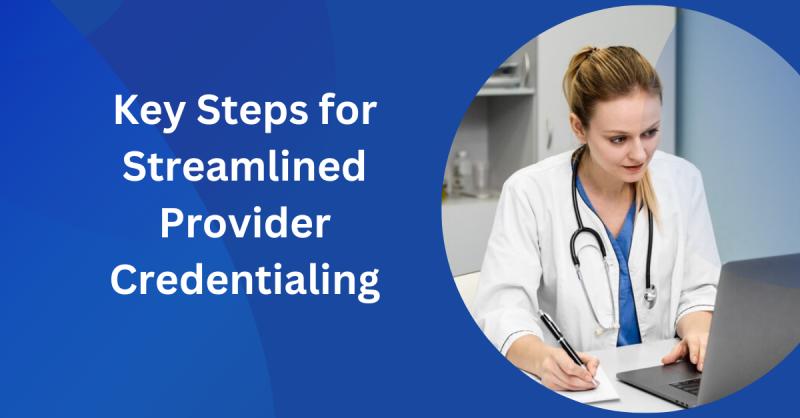Key Steps for Streamlined Provider Credentialing

Provider enrollment and credentialing services are essential for healthcare practices to function smoothly and ensure patient care. These services streamline provider approvals with insurance payers, allowing providers to offer billable services. Efficient credentialing and enrollment reduce delays, improve compliance, and allow providers to focus on patient care, reinforcing the critical role of these services in practice success.
Preparing for the Credentialing Process
Preparation is a crucial first step in the credentialing process. Practices must gather comprehensive documentation, including licenses, education records, and professional references. Missing or outdated information is one of the most common causes of delay. Establishing a checklist and verifying documents in advance ensures a smooth application process and speeds up the overall enrollment, benefiting both providers and patients.
Ensuring Accuracy in Application Submission
Accurate application submission is vital for reducing credentialing delays. Small errors in documentation can lead to processing issues, causing costly setbacks. Each application must align with payer-specific requirements, making attention to detail essential. By thoroughly checking forms and ensuring information accuracy, practices can avoid rejections and keep the credentialing process on track for timely approvals.
Navigating Compliance with Regulations
Maintaining compliance with industry regulations is a fundamental part of credentialing. Providers must adhere to local, state, and federal healthcare laws, as well as payer-specific guidelines. Credentialing services help practices navigate these regulations, ensuring that all required criteria are met. This compliance not only protects the practice but also reinforces patient trust in the provider’s qualifications and standards.
Effective Communication with Insurance Payers
Open communication with insurance payers is essential during the enrollment process. Prompt responses to payer requests and clear communication regarding any changes expedite the process. Credentialing services act as intermediaries, facilitating dialogue with payers, addressing inquiries, and ensuring that all requirements are met. This efficient communication significantly reduces waiting times for provider approval.
Managing Timelines and Avoiding Delays
Time management is critical for successful provider credentialing and enrollment. With multiple steps and waiting periods involved, delays can be common without careful oversight. Credentialing services offer scheduling support and track deadlines, ensuring that applications progress without unnecessary delays. Effective time management improves workflow, enabling providers to start seeing patients sooner.
Benefits of Professional Credentialing Services
Professional credentialing services offer expertise and support throughout the enrollment process. By handling document verification, compliance monitoring, and communication with payers, these services streamline credentialing tasks. Outsourcing to credentialing specialists allows healthcare providers to focus on patient care, while experts manage the complexities of credentialing and enrollment.
Conclusion
Efficient provider enrollment and credentialing services are fundamental for a practice’s success and operational efficiency. By following these critical steps, healthcare providers can navigate the credentialing process with confidence. RevenueEs, a trusted medical billing company, specializes in comprehensive credentialing and enrollment support, helping practices enhance compliance and optimize their operational workflow.
Post Your Ad Here
Comments